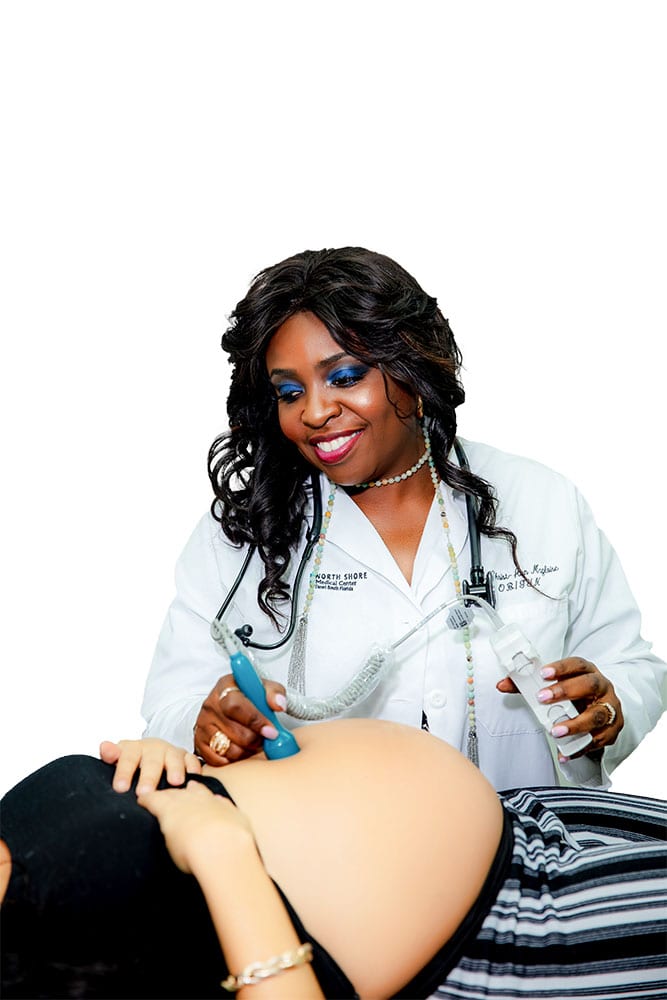By Christ-Ann Magloire, MD
Serenity Holistic OB/GYN & Wellness Spa
What is a VBAC?
Vaginal Birth After Cesarean (VBAC) is the term applied to any vaginal delivery that occurs following a Cesarean section. A VBAC may be chosen for multiple reasons and is associated with unique risks and benefits.
Once upon a time, after a Cesarean delivery had occurred, the standard of care was to continue performing Cesareans in any subsequent deliveries. This pattern was initially used to avoid the higher chances of a uterine rupture, which was a problem in early practice. Thankfully, due to today’s more advanced Cesarean approaches – specifically in the lower, less contractile segments of the uterus – the risks of rupture have been been greatly reduced.
What are the benefits?
Given the accompanying emotions during childbirth, a vaginal delivery can often offer a more connected experience, thus promoting bonding and the opportunity for an “authentic” delivery. As well, there is less blood loss, wound complications and clot formation. Additionally, having a successful VBAC reduces the risk of complications in future pregnancies compared to Elective Repeat Cesarean Section (ERCS).
What are the stats?
Currently, the number of women who elect to have a vaginal birth after a Cesarean delivery is approximately 17%.
In fact, it is estimated that close to 75% of women who attempt a VBAC are successful with no prior complications. Furthermore, having a VBAC may actually be safer, especially in women who plan on having more than 2 children.
Be sure to educate yourself and loved ones. It is possible to give birth vaginally after a Cesarean. Serenity Ob/Gyn is here for you now and always!
Didn’t I hear that…?
- “Once a Cesarean, Always a Cesarean…”
Since the 1960s, this has no longer been the case. Women who have had a Cesarean can safely go under Trial of Labor and a VBAC.
- “VBAC has a 60-70% risk of uterine rupture!”
Such risks were in reference to prior Cesarean techniques. With the advancement of Cesarean surgical approaches, such risks are vastly reduced.
- “VBAC moms can’t have epidural!”
According to the American College of Obstetricians and Gynecologists (ACOG), women undergoing a VBAC may absolutely receive an epidural. It has been shown that an epidural does NOT mask the pain associated with uterine rupture.
- “VBACs carry a 25% chance of maternal/fetal death!”
Historical statistics indicate that that risk has been radically reduced. The current risk of maternal mortality is well under one percent (approximately 0.0038%).
- “Cesarean surgeries carry no risks!”
Often underestimated, the risk in Cesarean surgeries actually compounds with each subsequent delivery.
- “VBAC is illegal in my state!”
VBAC is an approved procedure and legal throughout America.
- “VBACs don’t have the option of induction!”
Per ACOG, induction during a VBAC remains an option.
- “If your doctor doesn’t offer VBAC, you must have a Cesarean!”
The ACOG affirms that “restrictive VBAC policies should not be used to force women to undergo a repeat Cesarean delivery against their will.”
Facts About Our Community
● In African American populations, there are higher Cesarean rates and lower VBAC rates. [1]
● African American women are significantly less likely to experience a uterine rupture. [1]
- Common presumed barriers to receiving VBACs include socioeconomic disparities, general maternal health, social stigma or “mother blaming”.
Dr. Christ-Ann Magloire Contact Information:
Serenity Holistic OB/GYN & Wellness Spa
13499 Biscayne Blvd, North Miami, FL 33181
Phone: 305-705-3377 – Email: caamagloire@gmail.com


